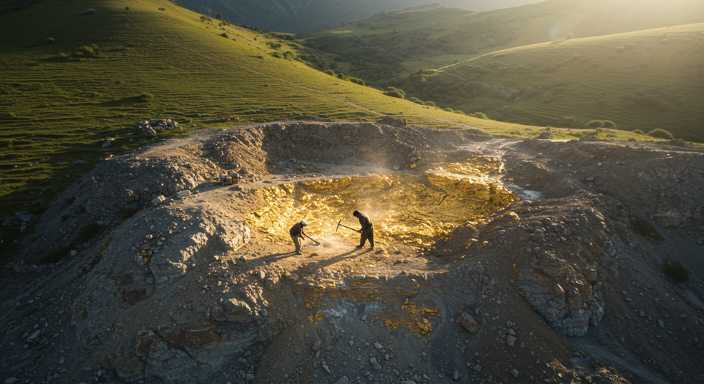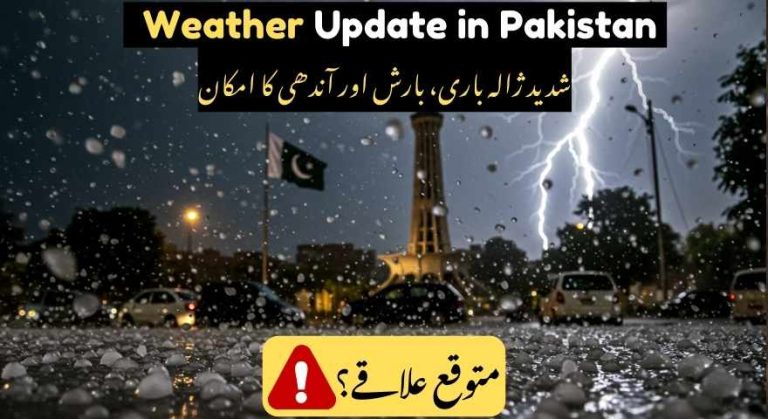Pakistan Discovers Major Gold Deposits in Baluchistan and Punjab

Additionally, a massive gold reserve worth approximately ₹80,000 crore (PKR 600 billion or $2.1 billion) was found along the Indus River in Punjab’s Attock district, spanning a 32-kilometer stretch. Geological surveys indicate these placer gold deposits, carried downstream from the Himalayan region, contain an estimated 2.8 million tolas (32.6 metric tons). The project, led by National Engineering Services Pakistan (NESPAK) and Punjab’s Mines and Minerals Department, marks a milestone for Pakistan’s mining sector.
Key Facts:
- Location: Chagai, Balochistan (gold and copper); Attock, Punjab (gold in Indus River).
- Estimated Value: Indus River gold valued at ₹80,000 crore; Balochistan’s Reko Diq project holds over $60 billion in copper and gold.
- Quantity: Indus River deposits estimated at 32.6 metric tons; Reko Diq contains 60 million ounces of gold (1,700 tons).
- Economic Impact: PM Sharif stated the mineral wealth, potentially worth trillions, could help Pakistan bid farewell to IMF loans. The discoveries come as Pakistan’s gold reserves stand at $5.43 billion (64.74 tonnes) as of December 2024.
- Challenges: Large-scale mining requires significant investment, regulatory stability, and infrastructure. Illegal mining in Punjab and conflict in Balochistan pose risks.
PM Sharif’s Vision:
Addressing the Pakistan Minerals Investment Forum 2025, Sharif emphasized that the mineral wealth could attract global mining companies and foster bilateral cooperation, particularly with nations seeking to diversify supply chains. He expressed optimism that efficient extraction and advanced refining, potentially with Oman’s facilities, could stabilize Pakistan’s economy amidst high inflation and declining foreign reserves.

Additional Discoveries:
- Antimony: A rare earth metal deposit was found in Balochistan by the Oil and Gas Development Company Limited (OGDCL) and Pakistan Mineral Development Corporation (PMDC), crucial for modern technology.
- Gilgit-Baltistan: At least 10 mineral blocks containing gold, copper, nickel, and cobalt were confirmed.
- Oil and Gas: Mari Energies Limited discovered three new oil and gas reserves in the past two months, already producing crude oil and natural gas.
Outlook:
The discoveries offer a lifeline for Pakistan, grappling with economic challenges and foreign reserves at a low $5.43 billion. However, success hinges on political will, secure investment frameworks, and managing environmental impacts. The coming months will determine whether Pakistan can translate this mineral wealth into sustainable growth.
پاکستان میں بڑی مقدار میں سونا اور دیگر معدنیات ملے ہیں، جو ملکی معیشت کے لیے گیم چینجر ثابت ہو سکتے ہیں۔
اہم دریافتیں:
- دریائے سندھ، اٹک (پنجاب):
- 32 کلومیٹر کے علاقے میں 32.6 ٹن سونا ملا، جس کی قیمت تقریباً 80 ہزار کروڑ روپے ہے۔
- یہ سونا ہمالہ سے بہہ کر آیا، جو دریائے سندھ میں جمع ہوا۔
- پروجیکٹ نیشنل انجینئرنگ سروسز پاکستان (NESPAK) اور پنجاب کے کان کنی ڈیپارٹمنٹ نے شروع کیا۔
- ریکو ڈیک، بلوچستان:
- یہاں 1700 ٹن سونا اور تانبا ملا، جس کی قیمت 60 ارب ڈالر سے زیادہ ہے۔
- دیگر معدنیات:
- بلوچستان: اینٹیمونی (ایک نایاب دھات) ملی، جو ٹیکنالوجی کے لیے اہم ہے۔
- گلگت بلتستان: سونا، تانبا، نکل اور کوبالٹ کے 10 بلاکس ملے۔
- تیل اور گیس: ماری انرجیز نے پچھلے دو مہینوں میں تین نئے ذخائر دریافت کیے، جو تیل اور گیس پیدا کر رہے ہیں۔
معاشی فوائد:
- وزیراعظم شہباز شریف کا کہنا ہے کہ یہ معدنی دولت پاکستان کو آئی ایم ایف قرضوں سے نجات دلا سکتی ہے۔
- پاکستان کے موجودہ سونے کے ذخائر 5.43 ارب ڈالر (64.74 ٹن) ہیں، لیکن یہ نئی دریافتیں ملکی معیشت کو مستحکم کر سکتی ہیں۔
- عالمی کمپنیوں کے ساتھ شراکت داری سے سرمایہ کاری اور ترقی کے مواقع بڑھیں گے۔
چیلنجز:
- بڑے پیمانے پر کان کنی کے لیے پیسہ، مستحکم قوانین اور بنیادی ڈھانچہ چاہیے۔
- پنجاب میں غیرقانونی کان کنی اور بلوچستان میں سیکیورٹی مسائل مشکلات ہیں۔
مستقبل:
یہ دریافتیں پاکستان کے لیے بہت بڑا موقع ہیں، لیکن کامیابی کے لیے سیاسی عزم، محفوظ سرمایہ کاری اور ماحولیاتی تحفظ ضروری ہے۔ اگر صحیح منصوبہ بندی ہوئی تو پاکستان معاشی طور پر مضبوط ہو سکتا ہے۔








